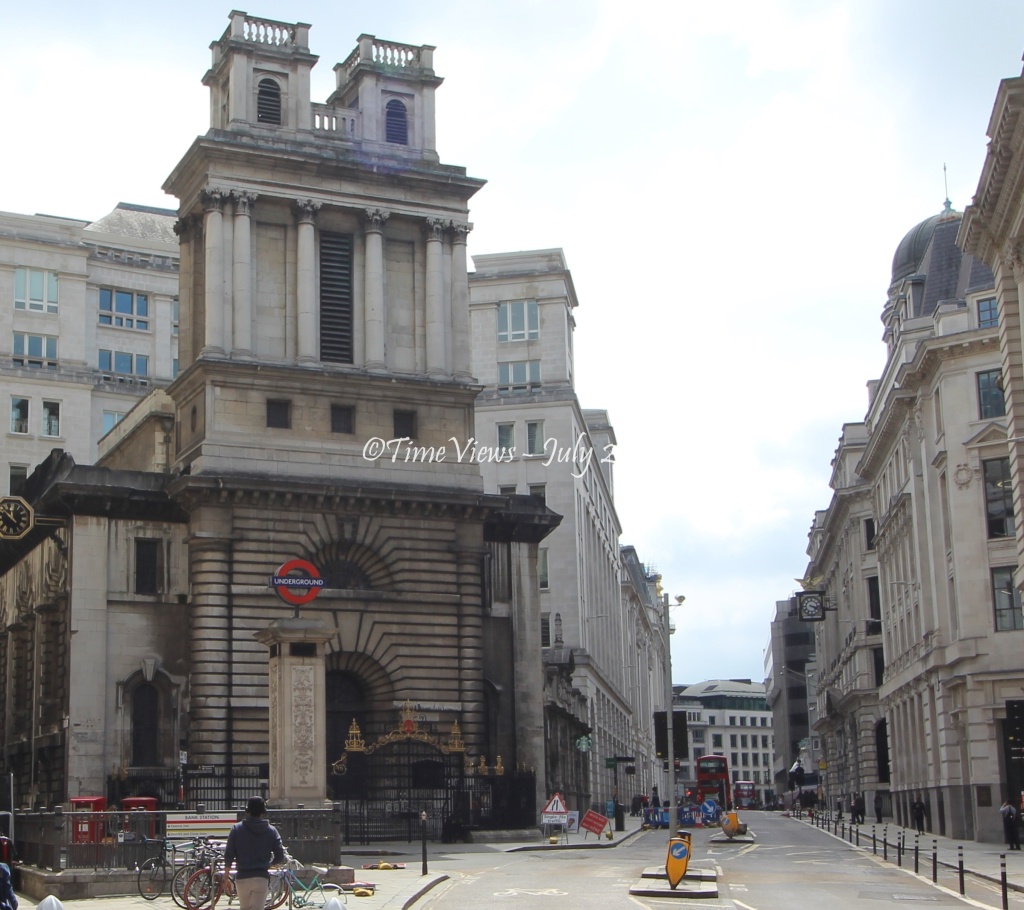
Roman remains were found under the site during the church’s rebuilding in the 1720s. There was also an Anglo-Saxon ‘wooden structure’. This led to speculation that the site could have been used for worship for some 2,000 years.
The present church on this site follows a Norman church – which lasted until 1445. It was rebuilt and a spire was added in 1485. That version lasted until 1666 when it was badly damaged in London’s Great Fire. Repairs (by Christopher Wren) proved temporary and the structure became unsafe – finally demolished in 1711.
Hawksmoor was fortunate in having a large open area in which to work, as the pre-1666 church had been surrounded by wooden houses and shops.
Changes were made in the latter part of the 19th century and it was actually scheduled for demolition on a number of occasions. The Bank Underground Station was constructed beneath the church at the end of the 19th century. The bones contained in the crypt were removed and reburied in Ilford. Due to the work carried out to reinforce the structure during construction of the underground, it is claimed that the church’s structure is stronger that it was before.
Image: Artist unknown (1840)

Image: © Steven Miell (TimeViews)

